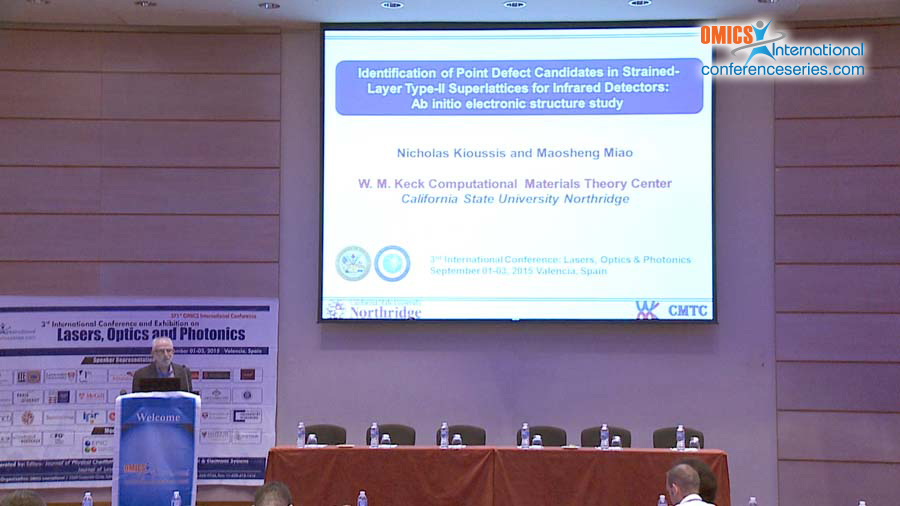
Nicholas Kioussis
California State University, USA
Title: Identification of point defect candidates in strained-layer type-ii superlattices for infrared detectors: Ab initio electronic structure studies
Biography
Biography: Nicholas Kioussis
Abstract
The InAs/GaSb and InAs/InAsSb type-II strain-layer superlattices (T2SLS) are of great importance and show great promise for mid-wave and long-wave infrared (IR) detectors for a variety of civil and military applications. The T2SLS offer several advantages over present day detection technologies including suppressed Auger recombination relative to the bulk MCT material, high quantum efficiencies, and commercial availability of low defect density substrates. While the T2SLS detectors are approaching the empirical Rule-07 benchmark of MCT’s performance level, the dark-current density is still significantly higher than that of bulk MCT detectors. One of the major origins of dark current is associated with the Shockley-Read- Hall (SRH) process in the depletion region of the detector.
I will present results of ab initio electronic structure calculations of the stability of a wide range of point defects [As and In vacancies, In, As and Sb antisites, In interstitials, As interstitials, and Sb interstitials] in various charged states in bulk InAs, InSb, and InAsSb systems and T2SLS. I will also present results of the transition energy levels. The calculations reveal that compared to defects in bulk materials, the formation and defect properties in InAs/InAsSb T2SLS can be affected by various structural features, such as strain, interface, and local chemical environment. I will present examples which demonstrate that the effect of strain or local chemical environment shifts the transition energy levels of certain point defects either above or below the conduction band minimum, thus suppressing their contribution to the SRH recombination.

